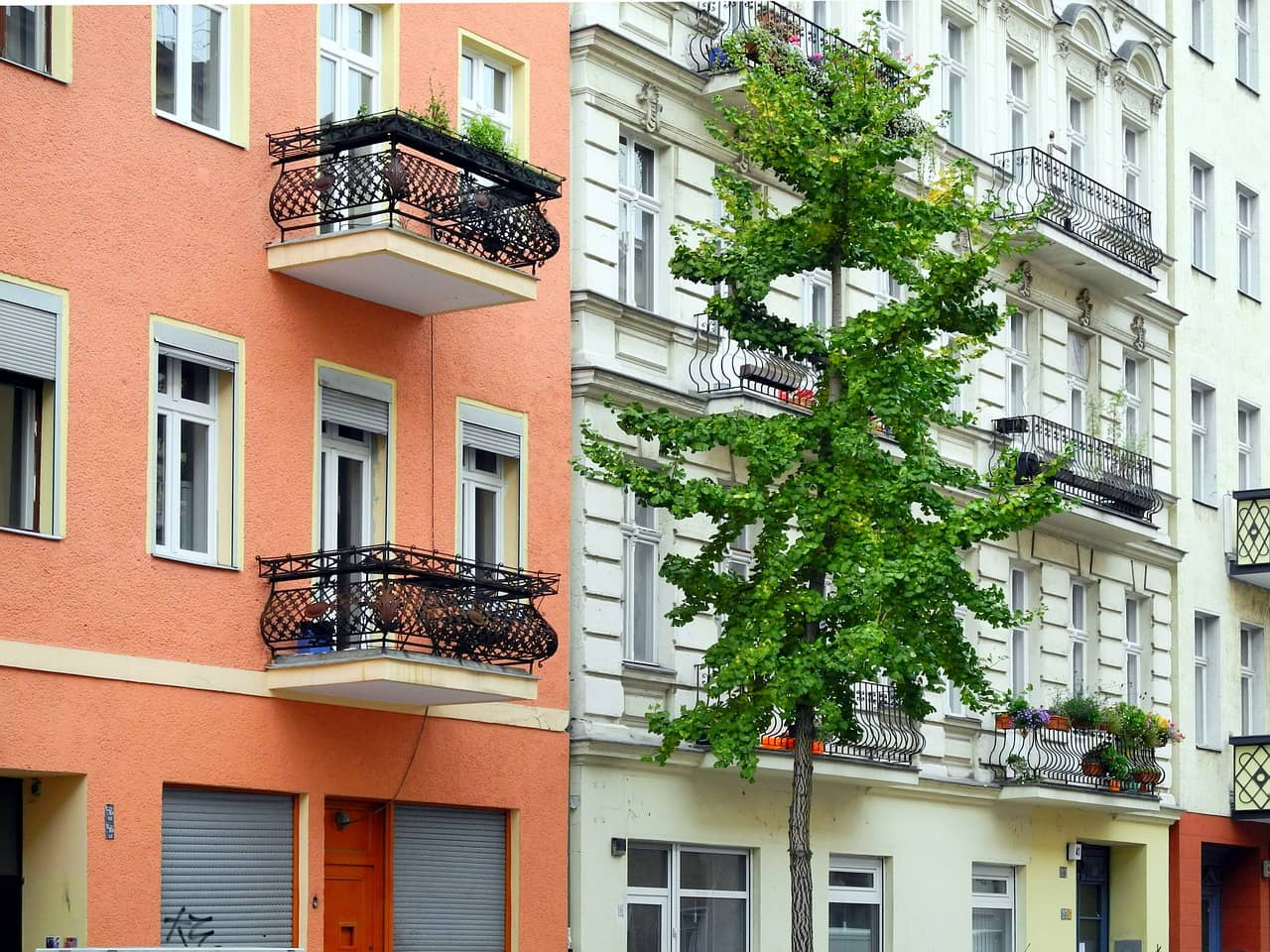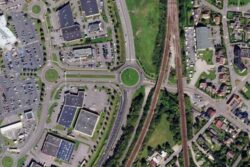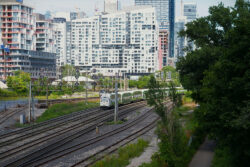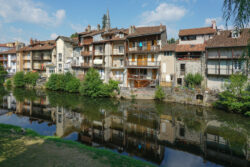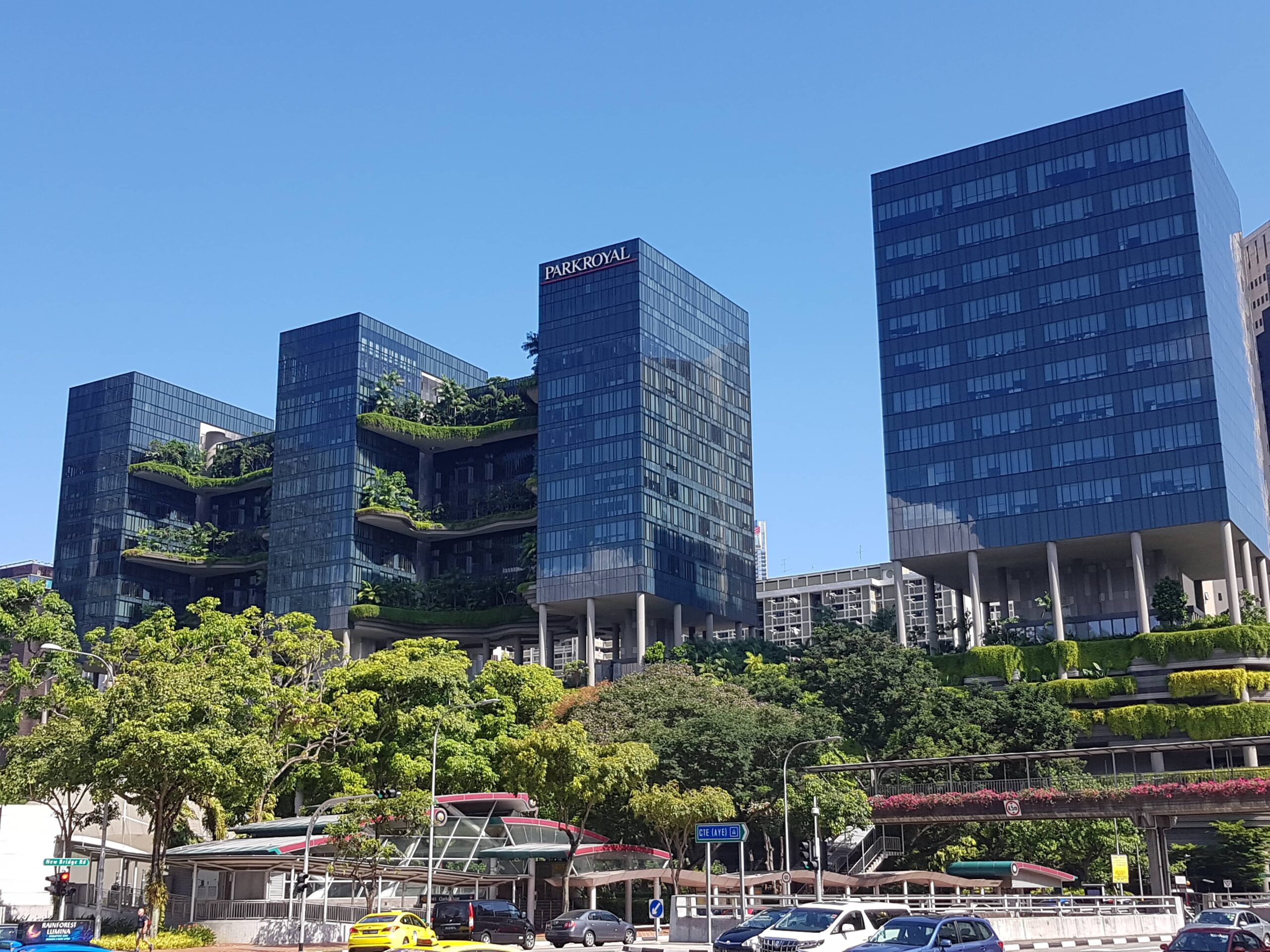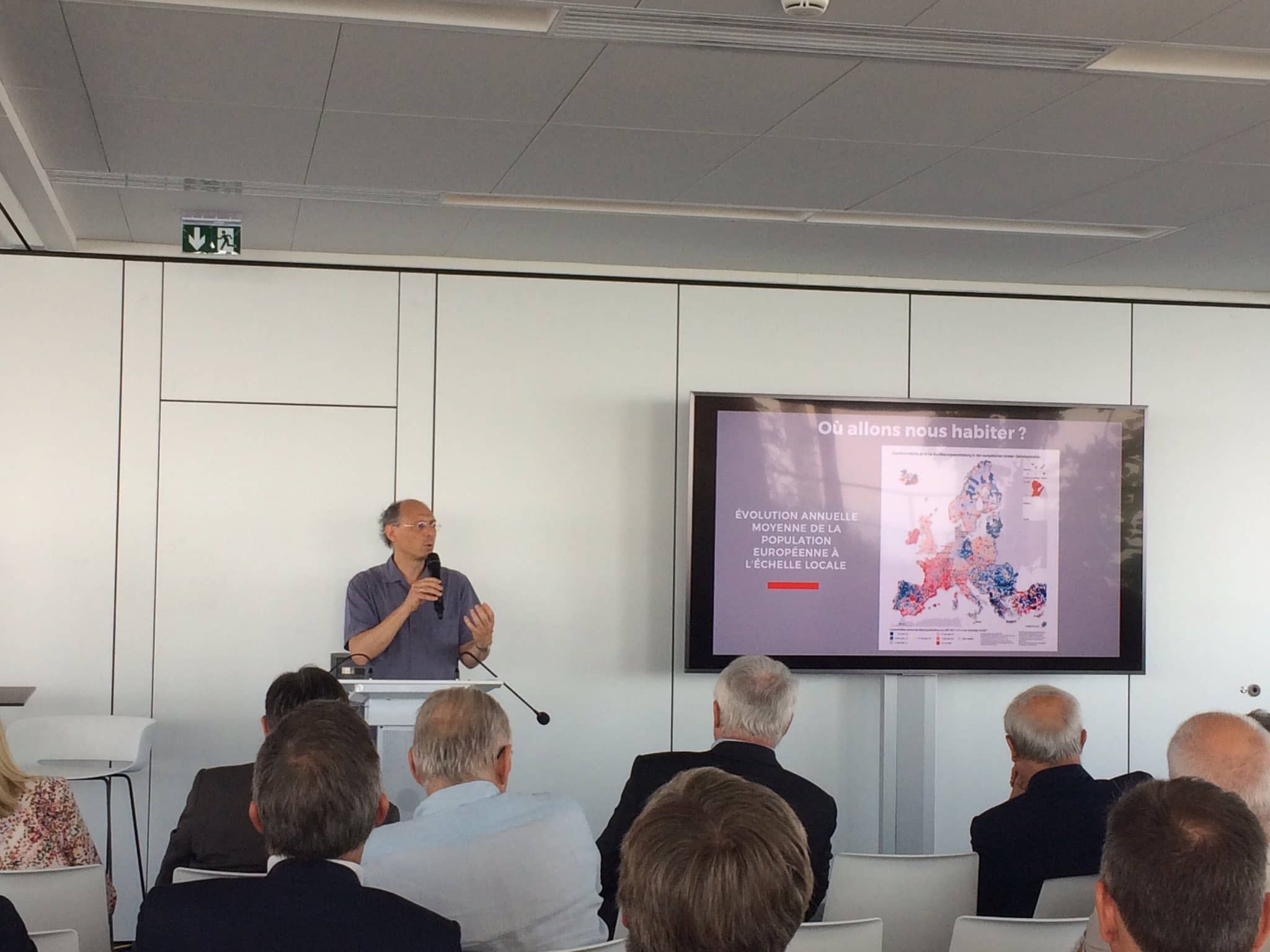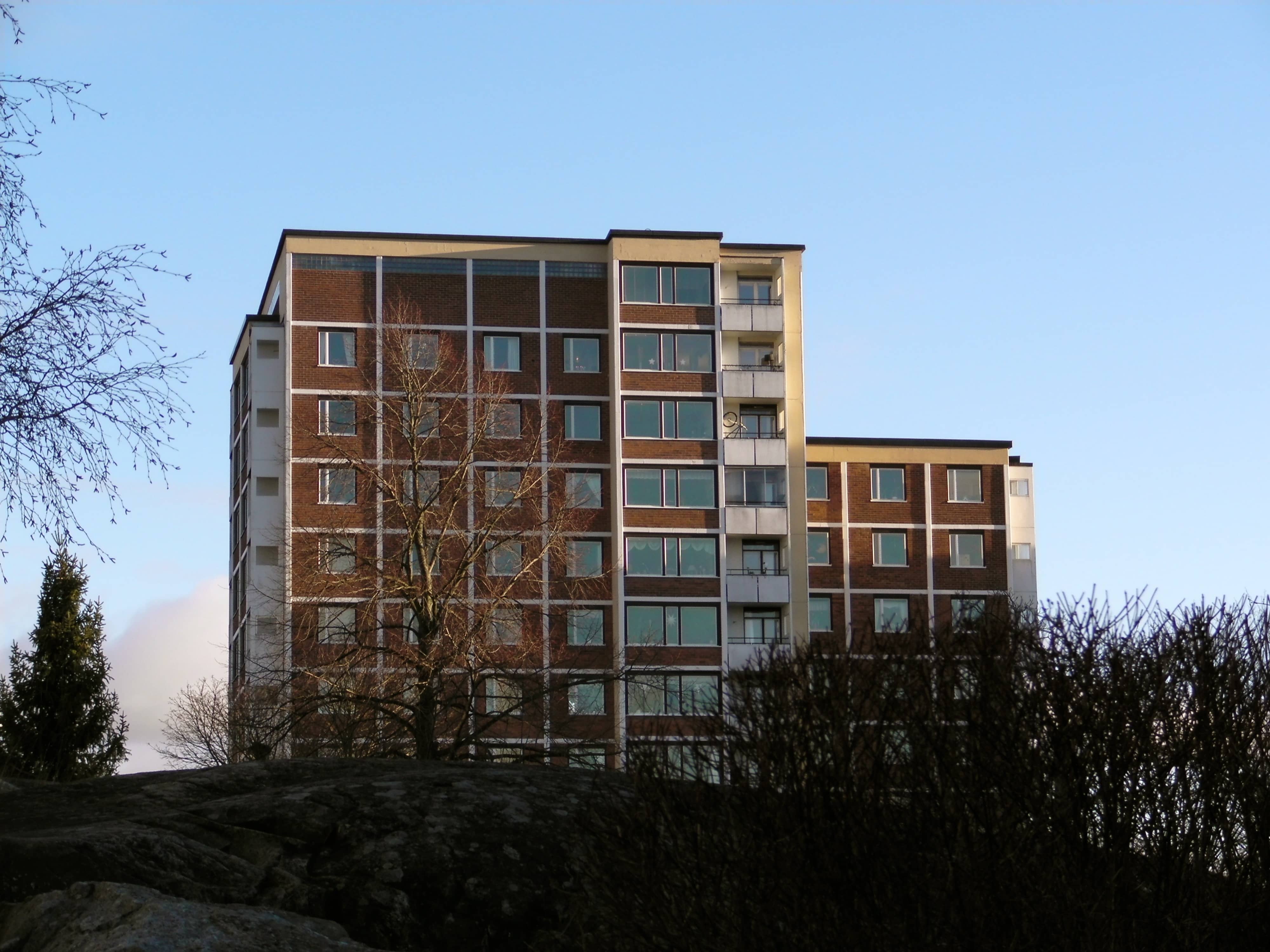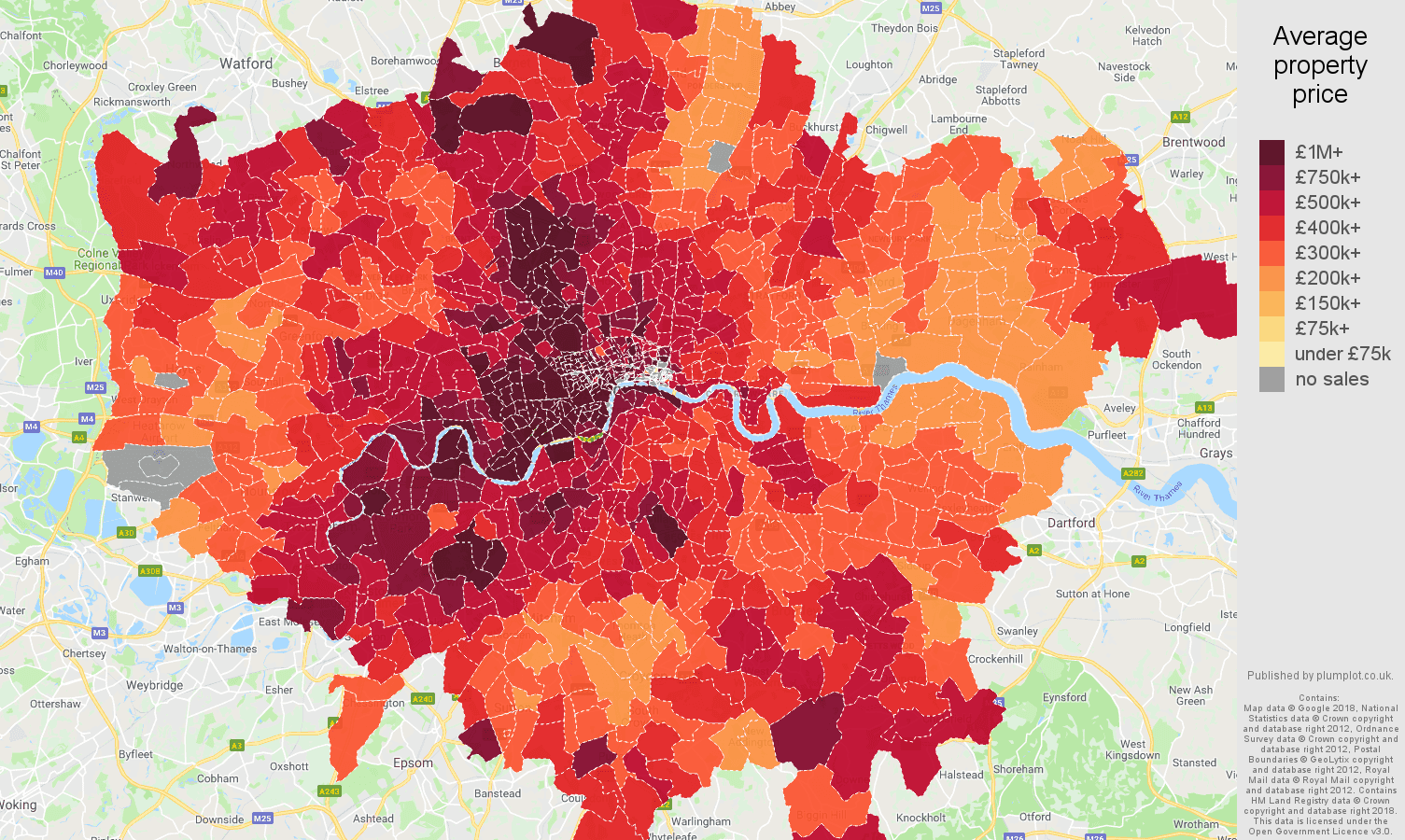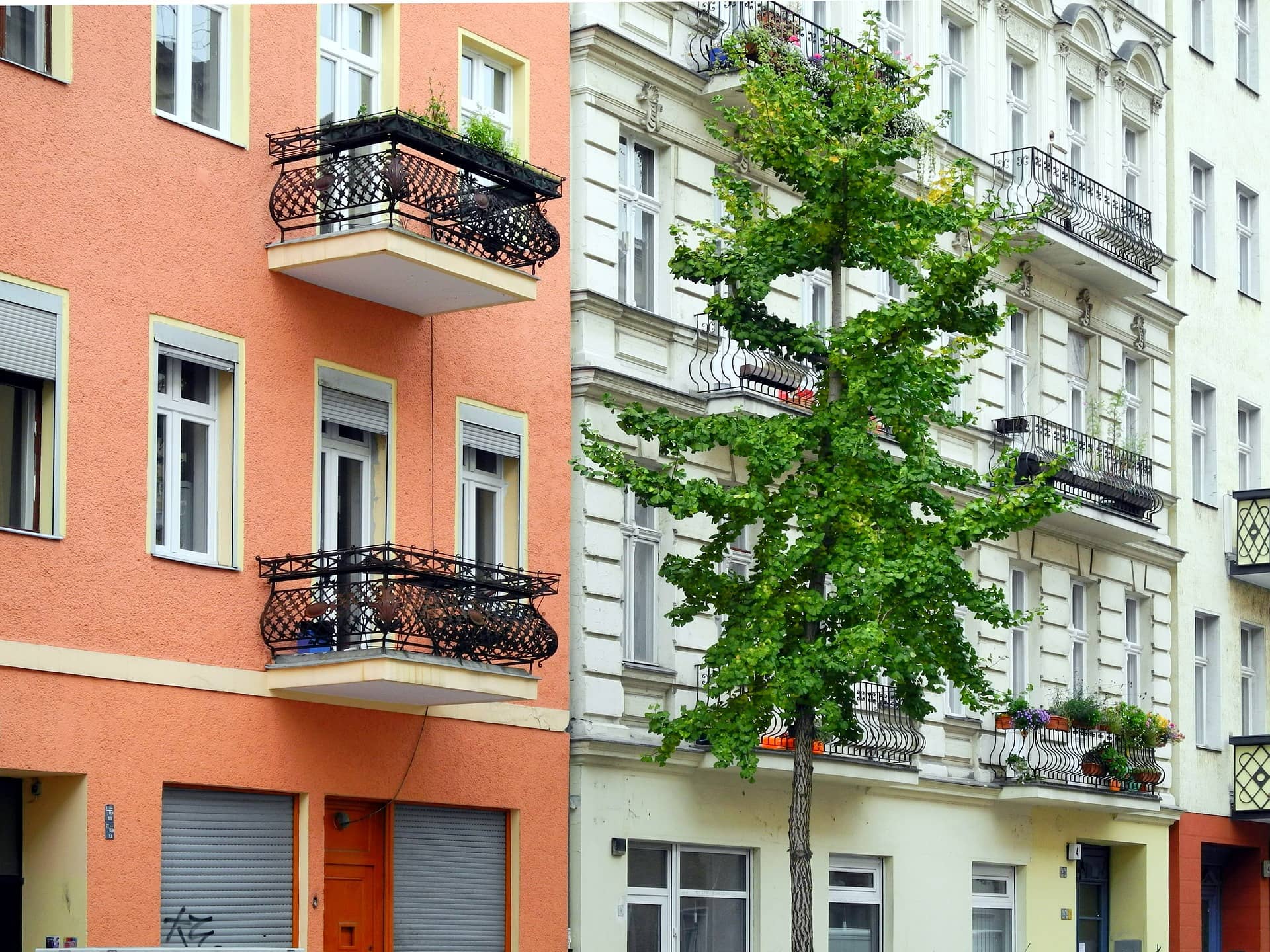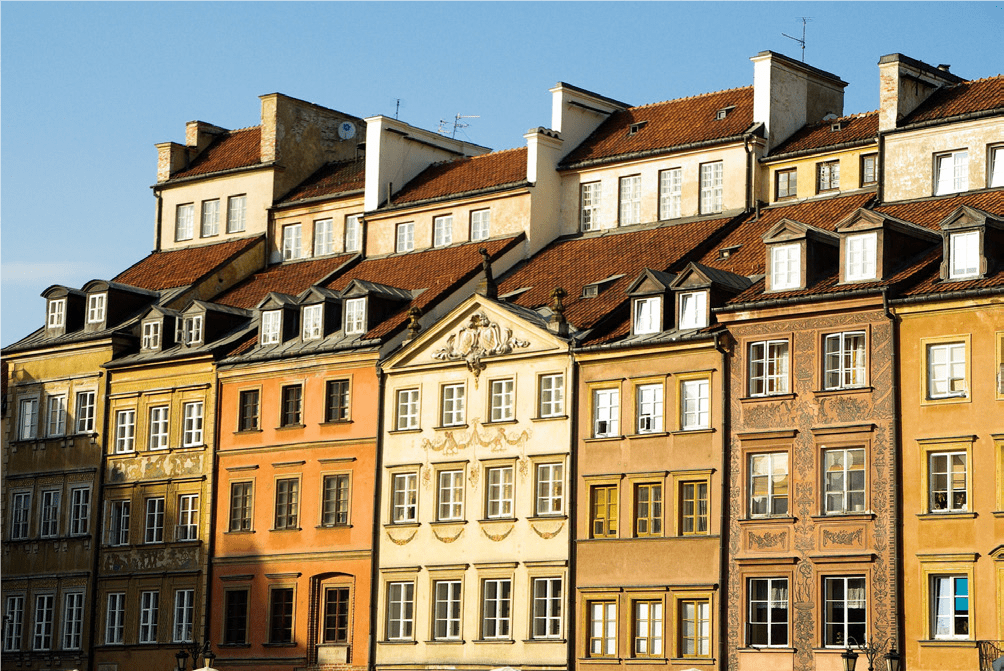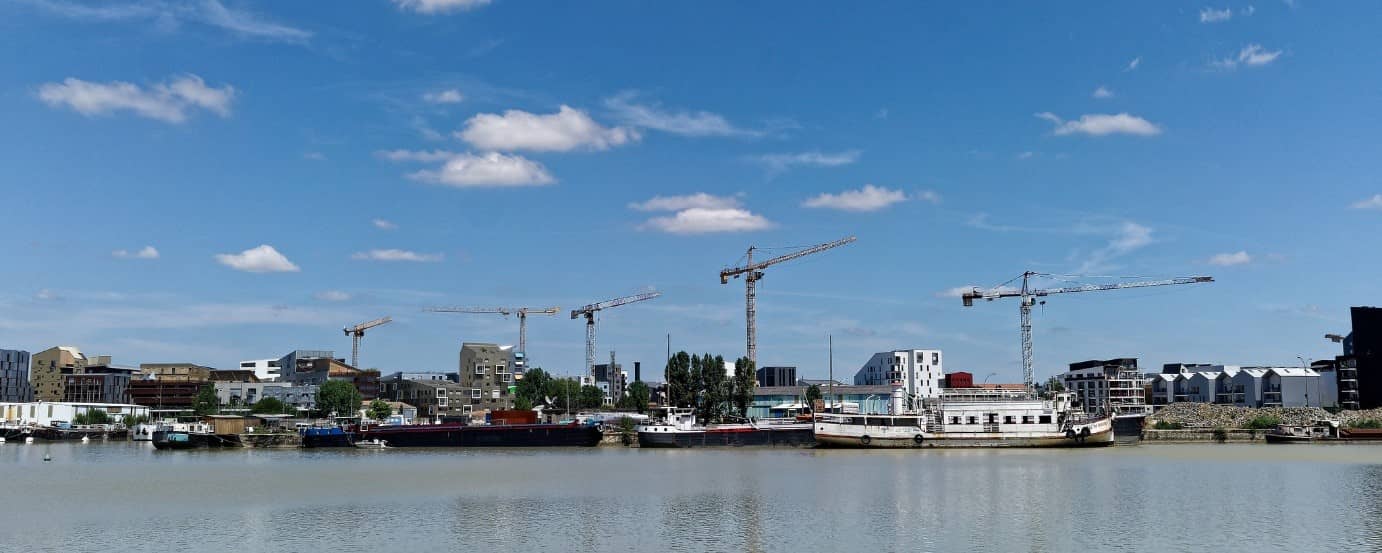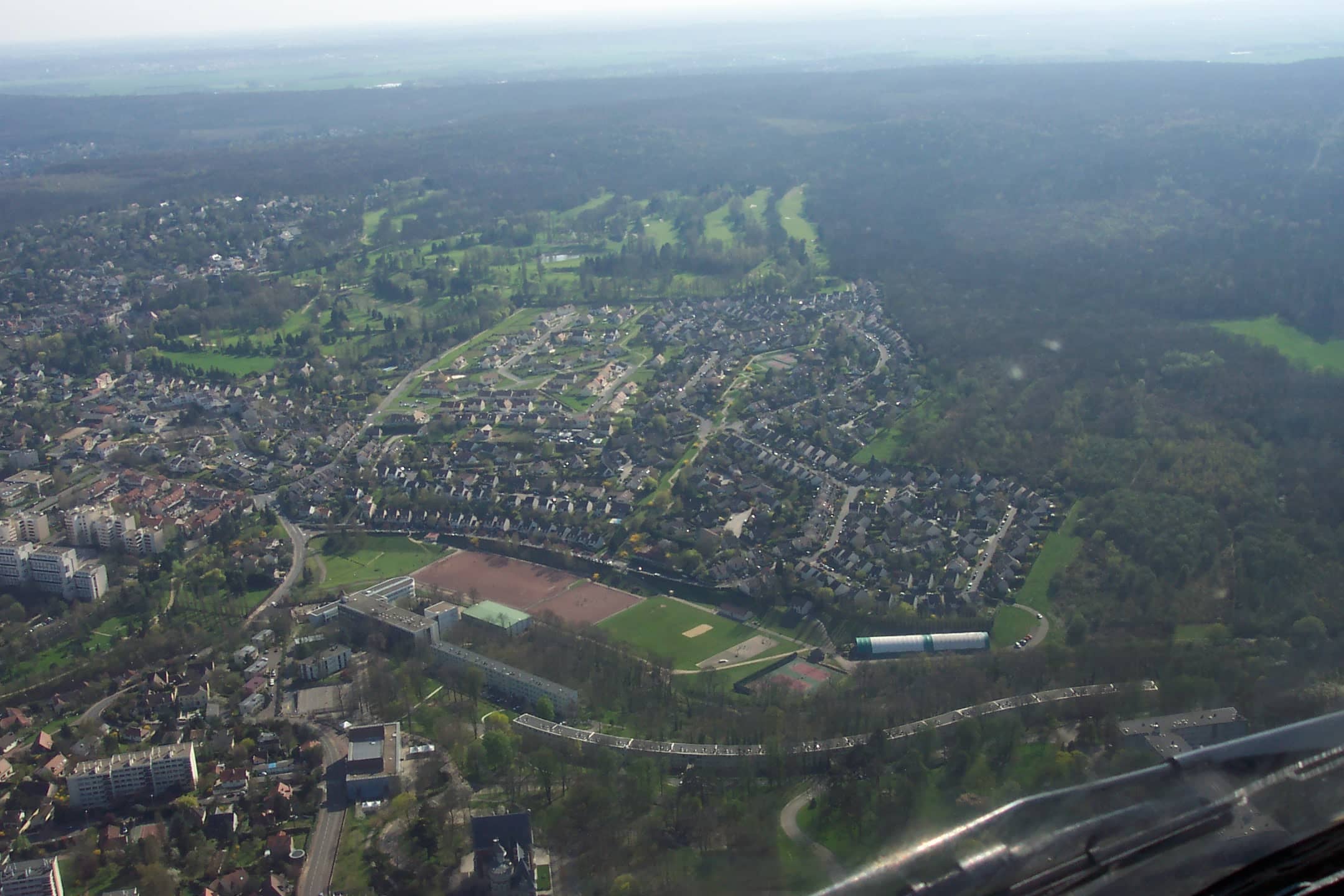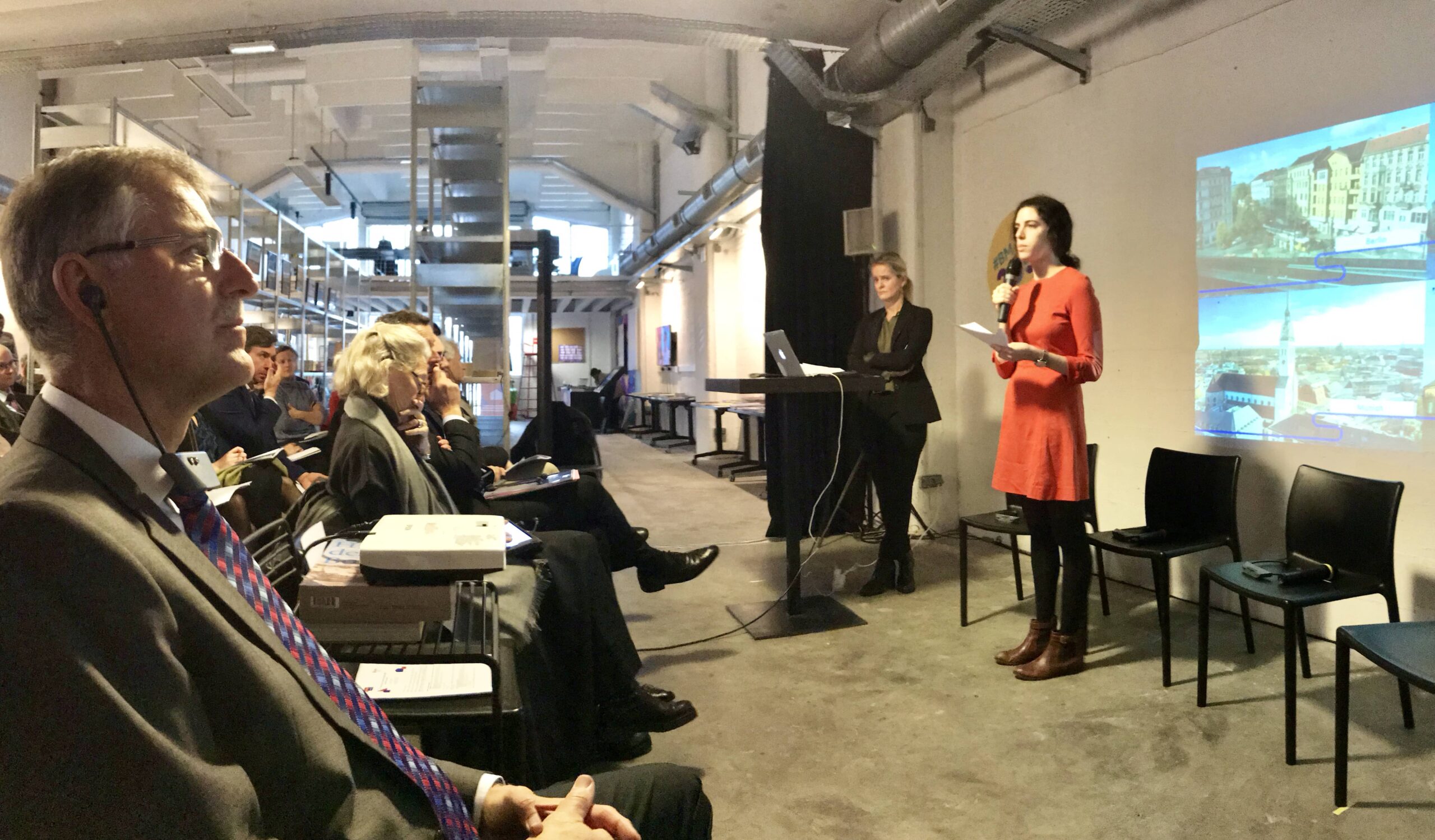

Munich | Affordable housing: the future may be polycentric
The third-largest city in Germany after Berlin and Hamburg, Munich is reputed for its dynamic economy, to the extent that the Handelsblatt recently named it “Germany’s own Bay Area”[1], in reference to the region in California which is home to major tech companies and digital start-ups.

Munich’s buoyant economy and labour market and their national and European appeal do not seem about to falter. The capital of the State of Bavaria, where many major German groups (Allianz, BMW, Siemens) have elected to locate their headquarters, continues to attract highly-skilled workers. Total labour market growth was 3% in 2017[2], while the unemployment rate in the city was only 4.3%[3], the lowest unemployment rate of all German cities with more than 500,000 inhabitants. Munich and its metropolitan area are among the rare areas in Germany in which the population and the number of jobs are still growing under the effect of migratory flows within Germany, the mass arrival of asylum seekers from 2015 and also positive birth rates[4].
Munich’s demographic dynamism (the city’s population is set to rise to 1.8 million inhabitants by 2030) generates increasing demand for housing which the city is currently struggling to meet. Munich is disadvantaged by the scarcity of available land. Michael Voigtländer, Head of the Research Unit Financial and Real Estate Markets at the German Economic Institute (IW Köln), notes that “German cities are faced with a major obstacle: the scarcity of land, particularly in Munich, a city that has grown continuously for the past 30 years”.
Ulrich Benz, of the Department of Planning and Building Regulations at the city of Munich, states that “after the end of the Cold War, large areas used for barracks which were formerly on the outskirts of the city but are now considered to be sought-after city-centre locations became available for new urban development projects. However, these plots of land are mostly built on today, meaning that plans for larger projects are only possible in the city’s suburbs”. At the same time, land prices are rising as land becomes scarcer, accounting for up to 60% of total property prices in Munich[10]. The annual volume of housing construction (36,000 housing units built between 2011 and 2015 and 7,400 in 2016[11]) fails to meet the rise in demand, currently estimated at approximately 8,500 new residential units per year, 2,000 of which should be units with moderate or subsidised prices, according to Ulrich Benz. Deutsche Bank Research notes that there is a “shortage of several tens of thousands of residential units”, illustrated by a vacancy rate that is near zero (0.2% at the end of 2015 according to Empirica[12]). To this can be added the ageing of the population and the increasing occupation of housing with large surface areas by elderly residents living alone.
In recent years, the combination of these different factors has resulted in a sharp increase in Munich’s property prices, together with a growing shortage of affordable housing for low-income households. The average sale price of an apartment in Munich doubled between 2009 and 2017[13], while the population rose from 1.36 to 1.53 million inhabitants over the same period. A new apartment with a surface area of 80 square metres cost €600,000 in Munich in 2016, compared to €400,000 in Berlin or €280,000 in Mannheim[14], while the average sale price of housing in Munich is currently roughly €7,500/square metre for new-build dwellings and €5,600/square metre in older buildings. Rents are also increasing spectacularly. They rose by 7.4% over 2015 alone[15] and reached €18/square metre[16] on the regular market in 2016. Lena Sterzer, researcher at the Technical University of Munich, notes that:
“The housing market in Munich […] makes it increasingly hard, particularly for low- and medium-income households, to find affordable housing and sustain a livelihood. The lower a household’s income, the higher the share of its income is spent on rent, so that shares of 40% or above have become increasingly common [in Munich]”[17].
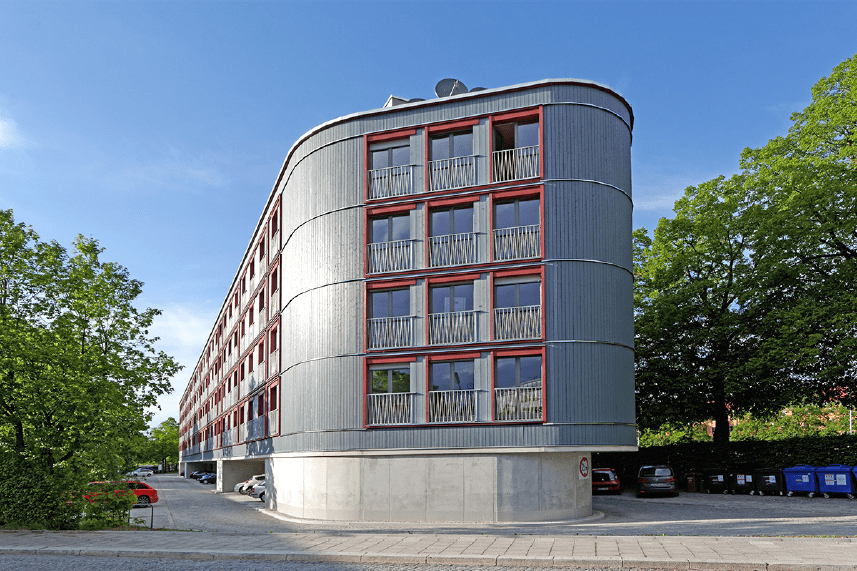
Yet while low-income households are finding it increasingly difficult to live in Munich, this is also the case for medium-income households, who are struggling to find in the most expensive city in Germany the kind of housing they would still be able to afford in other cities: “a central location, 3 rooms, kitchen and bathroom with an acceptable layout and balcony. Such apartments are considerably above the means of middle-class employees, which is leading an increasing number of analysts to speak of a crisis”, writes Jean-Marie Gambrelle about Munich[18]. “All income brackets are affected by the current shortage”, states Ulrich Benz.
To relieve this situation, the city council has undertaken an ambitious housing construction programme, recently revising its annual housing construction objectives upwards (8,500 residential units per year between 2017 and 2021, as against 7,000 per year before 2016)[19]. Its two municipal housing companies, GEWOFAG and GWG, previously focused on maintaining existing stock, are now starting to build again, concentrating most of their efforts on affordable rental housing for low- and medium-income households. GEWOFAG and GWG have set themselves a joint construction target of 1,250 housing units per year. The two companies currently own 61,300 housing units, 23,000 of which are subsidised, i.e. 7.5% of Munich’s total residential stock, making them a major source of affordable housing in the Bavarian capital. “Municipal housing associations serve to some extent as a regulator on the constantly overstretched Munich housing market”, notes the city council[20]. They obtain available land directly from the city council free of charge through ownership transfers and receive regular subsidies, which facilitates their financing from banks, specifies Ulrich Benz.
At the same time, several municipal programmes are striving to overcome the shortage of affordable housing. The “Wohnen in München VI”programme, the sixth edition of a scheme created more than 25 years ago, is the largest municipal housing programme in Germany. Through this new edition of “Wohnen in München”, the municipality of Munich will finance, from 2017 to 2021, the construction of affordable and subsidised housing to the tune of €870 million[21], and in addition some €250 million will be allocated to support construction operations by the aforementioned municipal housing companies[22]. The “LaSie” project (which stands for Langfristige Siedlungsentwicklung, long-term residential development) strives to densify the city and redevelop spaces that are already built-up (former industrial areas, barracks dating back to the Cold War) to create new residential areas and enhance housing on the outskirts of the city. Lastly, the “Wohnen für Alle” programme rolled out in March 2016 seeks to step up the production of subsidised housing for low-income households and is set to bring about the construction of 3,000 new housing units by 2019, half of which are built by private developers and supported by State funding of €135 million in the form of loans.
In addition to these strong initiatives to promote densification and housing construction, the implementation of the Munich model (“München Modell”) can be cited. The aim of this model is to “achieve a mix of subsidised and privately financed house building for middle- and low-income groups in all locations of the city and even within single development projects”[23]. The model has four basic principles: the principle of socially equal land use; the Munich model for rental housing (“München-Modell Miete”), which develops the affordable rental housing stock through the provision of reduced-price public plots to private and public investors; the Munich model for ownership (“München-Modell Eigentum”) which aims to attract middle-income families to the city centre and encourage them to purchase a property; and lastly the reduction of real-estate prices, by selling plots for a fixed price below the market level, that depends not on location but on buyer’s income[24].
Nonetheless, this range of measures and schemes has not yet successfully contained the rising property prices or reduced the shortage of affordable housing, as Elisabeth Merk, councillor in charge of urban development, admits: “Our planning is operating at a strong pace but the drivers behind growth are still going faster”[25]. A consequence of the high property prices is that a growing number of young professionals and low-income households are currently leaving Munich and settling in its surrounding areas which are reputedly more affordable. “Two contrary spatial effects can be observed in the Munich region”, writes Lena Sterzer. “On one hand, low-income households tend to prefer an urban environment, which offers more flexible access to job opportunities, small residential units, good public transport supply, and short distances to urban amenities; on the other hand, strong price pressure and a highly competitive housing market are forcing many low-income households to leave the city” [26]. This decision often enables them to reduce their ratio of income[27] while living in better conditions: “On average, households leaving the city of Munich and moving to the surrounding area double their residential size while saving up to one-fourth of their rent cost per square metre”[28]. The future of affordable housing for the inhabitants of Munich therefore appears to hinge not only on the city itself, which may have become irredeemably unaffordable and in which land is set to remain scarce and expensive, but on the broader metropolitan region. It could well also depend on a completely different issue: mobility.
Mobility, the key to affordable housing?
While an increasing number of low-income households are leaving Munich for its metropolitan region, once there they often find much more basic mobility options than in the inner city. Public transportation in the Munich metropolitan region is organised around and concentrated in the city centre, which is reputed for the quality of its transport infrastructure and its public transportation system. In 2010, a study conducted by the University of Stuttgart concluded that Munich had the best public transit system of the 23 European cities ranked for travel times, opportunities to make connections, customer information, and ticket prices[29]. Ulrich Benz, however, notes that “public transportation must be reinforced as the lines are already overstretched”. At the same time, inhabitants are using their cars increasingly. “The number of new registrations is constantly on the rise: statistically speaking, each person in Munich has a car”, explains Ulrich Benz. Munich’s road infrastructure “forms a radial system merging in the city. The public transport network is radially aligned around it as well”[30]. Conversely, public transportation becomes scarcer the further away one travels from the centre of Munich.
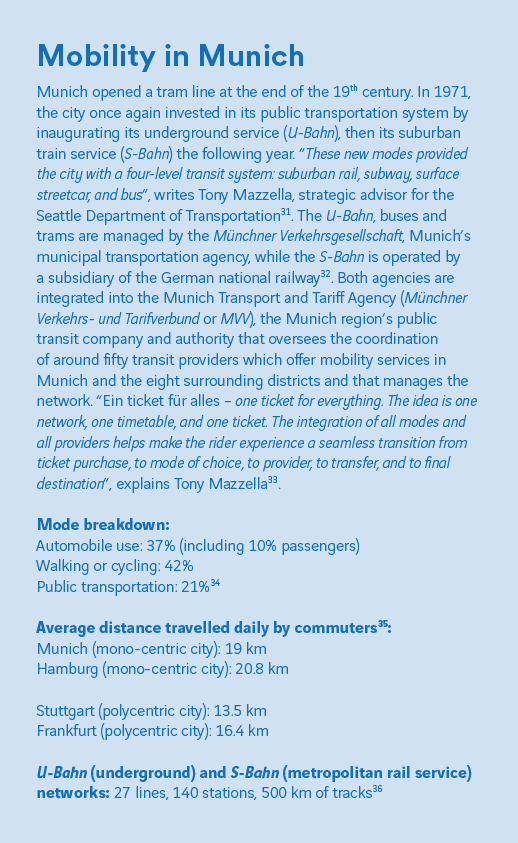
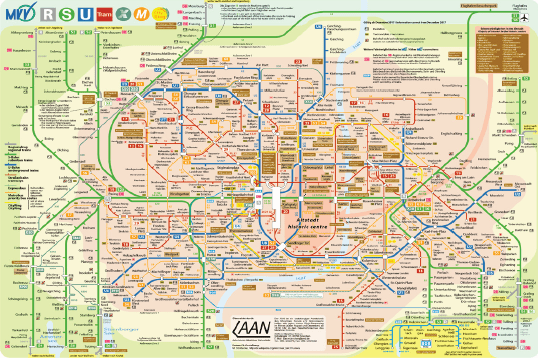
As a result, living on the outskirts increases the cost of mobility and the share of low-income households’ budgets devoted to it. Mobility costs are lowest in the core city, followed by municipalities which are connected to the S-Bahn network. Inhabitants of rural areas, which are located away from transport axes, pay the highest costs[37]:
“A lack of local amenities or transit services causes longer trips and increases car dependency. This aggravates the problem of an overloaded transport system, resulting from fast growth regarding the total number of trips within the region. Existent transport systems were not designed to handle the additional demand during peak hours. Time and comfort losses as well as increased mobility costs are the outcome”[38].
Lastly, affordable housing in the outskirts is sometimes far from job opportunities and other urban amenities. The expense of transportation and the fewer connections to the public transportation system contribute to worsening the effects of this distance for low-income households. Work conducted by a team of researchers from the Technical University of Munich observed the following:
“A lack of proper regional planning, in terms of labour as well as housing, is resulting in growing distances for both commuting and completing activities, as well as the fulfilling of basic needs”[39].
Yet the price and quality of mobility services may benefit from being considered as one of the key factors of affordable housing: is housing really affordable if its location requires a significant extension of its mobility budget? Should mobility be considered as part of the price of housing for households, in that the housing’s location dictates mobility behaviour with incomes that are equal? It is therefore essential that mobility be placed at the heart of the housing issue, first of all by no longer considering them as two separate fields. This is what Munich city council is doing in the new Parkstadt Schwabing district in the north of the city: permission to complete the final third of the housing development was only granted once the developers had committed to financing and building a tram connection. The construction of the tram then enabled the development of 150,000 square metres of commercial floor space and 500 residential units[40]. “This high-density development with limited parking provision would not be considered feasible without the high quality / high capacity public transport link the tram will provide” [41], notes the International Association of Public Transport.
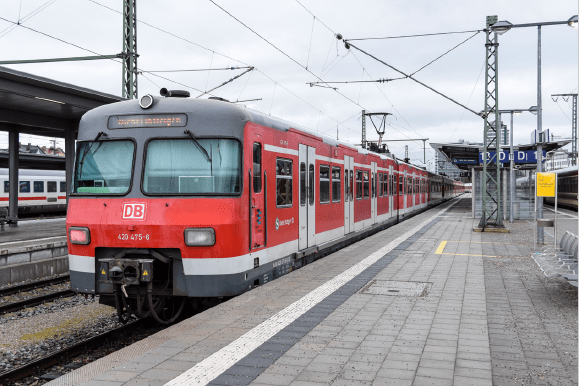
The challenge of a combined consideration of affordable housing and mobility must be met on a metropolitan level if the affordable housing supply which remains around Munich is to become a viable solution for low-income households thanks to a mobility service across the metropolitan area. The response to this challenge must involve recreating sub-centres, meaning that the region is no longer a system oriented solely on its main city but conversely a polycentric system. It may well prove that this may be the only approach that will enable Munich to develop affordable housing for low-income households. Greg Clark and Tim Moonen write that “existing house-building rates are insufficient to meet high demand. Re-development of brownfield sites has so far opened up new land within the city limits, but it is now running out of spaces to re-use, strengthening the case for more polycentric urban development and tangential transport links”[42]. “Regional, dense sub-centres with employment opportunities rather than a suburbanization of housing are needed to avoid dormitory towns and reduce employees’ trip lengths”, specify the researchers of the Technical University of Munich[43].
However, these sub-centres can only be developed if significant investments are made in mobility. Michael Voigtländer explains: “We need more investment in public transportation. An easy commute into the city centre means that people can settle outside the urban core; this would greatly relieve the pressure on cities like Munich”. Elisabeth Merk, councillor in charge of urban planning, is aware of the need for such investment: “Because stagnation is not an option politically or socially, a well-designed public transportation system – which also stretches to the broader region – must provide strategic support that cannot be rolled out in the city of Munich alone”[53].
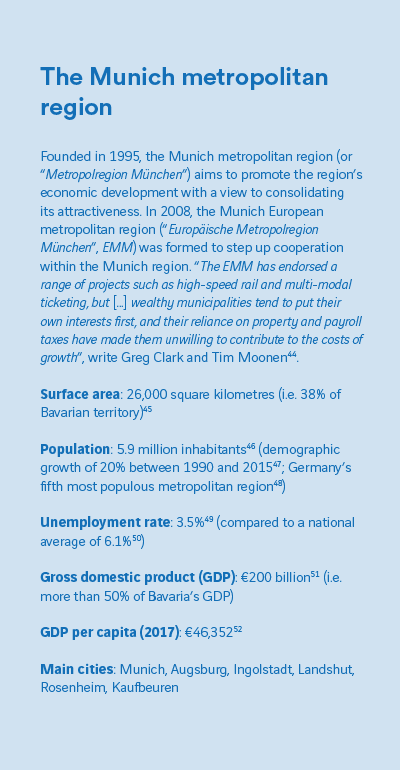
However, the creation of these new sub-centres requires real and effective cooperation between the municipalities and local authorities of the Munich metropolitan area. “In order to satisfy housing demand”, writes Munich city council, “the State capital’s cooperation with councils, municipalities and districts in the surrounding region will grow as they still have the potential to build new housing”[54].
There are already initiatives which appear to attest to such a cooperation drive between Munich and the other municipalities and communities in its metropolitan region: one example is the development, by Munich and seven municipalities in the Würmtal[55], of a “Regional Planning Development Concept for Munich South-West” (“Raumordnerische Entwicklungskonzept München Südwest”) which is a joint strategy for housing and mobility[56]. This is also one of the objectives of the Munich Regional Planning Association (“Regionaler Planungsverband München”), which is an association of local authorities founded in 1950 to support its members (the city of Munich and 150 municipalities in the surrounding region) in their urban planning initiatives[57]. Yet Greg Clark and Tim Moonen note that “the existing system of co-operation […] does not cover the whole functional urban region, and has struggled to devise common approaches. Munich therefore risks entering a low-co-ordination, low investment equilibrium that could damage future competitiveness”[58].
Cooperation with surrounding municipalities continues to be a major challenge for Munich, in particular as regards housing investment, as Michael Voigtländer reminds: “One of the problems of Munich is the reluctance of the surrounding, mostly Christian Social democrat [CSU], municipalities to invest in housing, for fear of an inflow of population from predominantly Social-Democrat Munich [SPD] and of an ensuing shift in the electoral balance”. Ulrich Benz adds that “it is not at all in the surrounding municipalities interest to continue building homes to relieve pressure on Munich, and surrounding municipalities have so far only shown rather limited interest in drawing up a joint strategy on affordable housing on a metropolitan scale”. According to Greg Clark and Tim Moonen, a lack of consensus between the various stakeholders can be added to this reluctance:
“Munich’s leaders find it hard to generate the urgency or imperative to build infrastructure that will unlock further growth. Mayor Dieter Reiter’s options to address Munich’s growth challenges therefore depend on improving the City’s co-operation with its surrounding region which would provide integrated solutions to housing and transport”[59].
This need for further enhanced cooperation to develop affordable housing in the Munich region has led the city of Munich to found the Regional Alliance for Housing Construction and Infrastructure (“Regionales Bündnis für Wohnungsbau und Infrastruktur”). The Alliance’s mission is to work with towns and communities in the Munich region to identify land which may be used for housing, as Elisabeth Merk explains[60]:
“Growth does not end at the city limits, and so the Regional Alliance for Housing Construction and Infrastructure [Regionales Bündnis für Wohnungsbau und Infrastruktur] was established to work together with towns and communities in the region to make more land available for home building”.
In November 2015, the Alliance brought together several representatives of the metropolitan region who travelled to Berlin to call for more support from the Federal Minister of Transport and the Bavarian Minister of the Interior for the development of mobility infrastructure and housing construction. This action resulted in a promise, from both ministers contacted, to build a second central S-Bahn line in Munich, known as the “second Stammstrecke”, which is set to enter into operation in 2026[61].
This initiative should come with more commitment from the State of Bavaria, according to Greg Clark and Tim Moonen: “The City requires the state of Bavaria to take a leadership role to strengthen the inter-municipal relationships that can ensure the supply of new residential, commercial and transport functions beyond city boundaries”[62]. The researchers explain that the voting constituency of the Bavarian government, which has been dominated by the CSU party since the end of the Second World War, does not encourage integrated and effective metropolitan regional urban planning. They also observe that Munich today is practically lacking a “functional metropolitan government”, which would require the State of Bavaria to take a leadership role and develop an “enabling framework”[63]. It may be that Munich can hope to stem the housing shortage by taking a broader look at the issue of affordable housing, which would include daily mobility issues, and by going beyond the municipal level to extend to the metropolitan and regional levels.
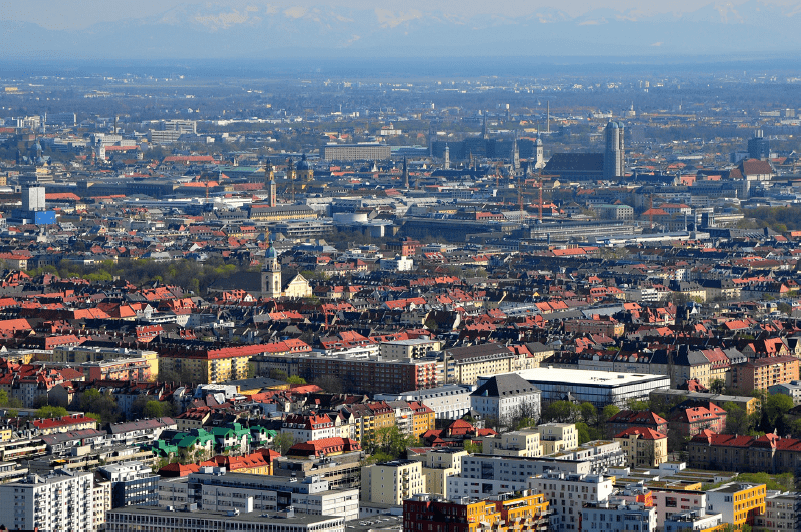
[1] On almost every indicator, Germany’s south is doing better than its north. In: The Economist [on-line]. (Published on 20 August 2017.) Available at: https://www.economist.com/kaffeeklatsch/2017/08/20/on-almost-every-indicator-germanys-south-is-doing-better-than-its-north. (Viewed on 19 July 2018)
[2] MÖBERT, Jochen. The German housing market in 2018 – Price and rent outlook for Berlin, Düsseldorf, Frankfurt, Hamburg, Munich and Stuttgart [on-line]. Frankfurt: Deutsche Bank Research, 2018, 11 p. Available at: https://www.dbresearch.com/PROD/RPS_EN-PROD/PROD0000000000460528/The_German_housing_market_in_2018.pdf. (Viewed on 20 July 2018)
[3] Ibid.
[4] BÜTTNER, B./THIERSTEIN, A./ZHAO, J./FÖRSTER, A. When growth stresses development. Interdependencies between housing, employment and mobility in the Munich metropolitan region [on-line]. 2014, 21 p. Available at: https://www.researchgate.net/profile/Benjamin_Buettner/publication/273633319_When_growth_stresses_development_Interdependencies_between_housing_employment_and_mobility_in_the_Munich_metropolitan_region/links/5541eecc0cf2aba1e4f121cc/When-growth-stresses-development-Interdependencies-between-housing-employment-and-mobility-in-the-Munich-metropolitan-region.pdf?origin=publication_detail.
[5] Munich Annual Economic Report 2017 [on-line]. Munich: Landeshauptstadt München, Referat für Arbeit und Wirtschaft, 2017, 16 p. Available at: http://www.wirtschaft-muenchen.de/publikationen/pdfs/aer17_summary.pdf. (Viewed on 19 July 2018)
[6] Germany, France, The Netherlands – Housing markets in perspective 2016 [on-line]. Hoevelaken:
BPD, 2016, 148 p. Available at: https://www.bpdeurope.com/media/107467/q540_bpd_dunefra-2016_engels-lr-web.pdf. (Viewed on 19 July 2018)
[7] MÖBERT, Jochen. The German housing market in 2018 – Price and rent outlook for Berlin, Düsseldorf, Frankfurt, Hamburg, Munich and Stuttgart [on-line]. Frankfurt: Deutsche Bank Research, 2018, 11 p. Available at: https://www.dbresearch.com/PROD/RPS_EN-PROD/PROD0000000000460528/The_German_housing_market_in_2018.pdf. (Viewed on 20 July 2018)
[8] Munich Annual Economic Report 2017 [on-line]. Munich: Landeshauptstadt München, Referat für Arbeit und Wirtschaft, 2017, 16 p. Available at: http://www.wirtschaft-muenchen.de/publikationen/pdfs/aer17_summary.pdf. (Viewed on 19 July 2018)
[9] http://www.lsccgrowthcommission.org.uk/wp-content/uploads/2016/06/CASE_STUDY_-_GREATER_MUNICH.pdf
[10] https://www.bpdeurope.com/media/107467/q540_bpd_dunefra-2016_engels-lr-web.pdf
[11] MÖBERT, Jochen. The German housing market in 2°18 – Price and rent outlook for Berlin, Düsseldorf, Frankfurt, Hamburg, Munich and Stuttgart [on-line]. Frankfurt: Deutsche Bank Research, 2018, 11 p. Available at: https://www.dbresearch.com/PROD/RPS_EN-PROD/PROD0000000000460528/The_German_housing_market_in_2018.pdf. (Viewed on 20 July 2018)
[12] MÖBERT, Jochen. The German housing market in 2°18 – Price and rent outlook for Berlin, Düsseldorf, Frankfurt, Hamburg, Munich and Stuttgart [on-line]. Frankfurt: Deutsche Bank Research, 2018, 11 p. Available at: https://www.dbresearch.com/PROD/RPS_EN-PROD/PROD0000000000460528/The_German_housing_market_in_2018.pdf. (Viewed on 20 July 2018)
[13] Ibid.
[14] Germany, France, The Netherlands – Housing markets in perspective 2016 [on-line]. Hoevelaken:
BPD, 2016, 148 p. Available at: https://www.bpdeurope.com/media/107467/q540_bpd_dunefra-2016_engels-lr-web.pdf. (Viewed on 19 July 2018)
[15] GAMBRELLE, Jean-Marie. Allemagne : le retour de la crise du logement. In: Politique du logement – analyses et débat [on-line]. Published on 1 July 2016. http://politiquedulogement.com/2016/07/allemagne-le-retour-de-la-crise-du-logement/. (Viewed on 20 July 2018)
[16] Germany, France, The Netherlands – Housing markets in perspective 2016 [on-line]. Hoevelaken:
BPD, 2016, 148 p. Available at: https://www.bpdeurope.com/media/107467/q540_bpd_dunefra-2016_engels-lr-web.pdf. (Viewed on 19 July 2018)
[17] STERZER, Lena. Does competition in the housing market cause transport poverty? Interrelations of residential location. European Transport Research Review [on-line]. 2017, vol. 9, n°3, p. 45. Available at: https://www.researchgate.net/publication/319043209_Does_competition_in_the_housing_market_cause_transport_poverty_Interrelations_of_residential_location_choice_and_mobility. (Viewed on 19 July 2018)
[18] GAMBRELLE, Jean-Marie. Allemagne : le retour de la crise du logement. In: Politique du logement – analyses et débat [on-line]. Published on 1 July 2016. http://politiquedulogement.com/2016/07/allemagne-le-retour-de-la-crise-du-logement/. (Viewed on 20 July 2018)
[19] MÖBERT, Jochen. The German housing market in 2018 – Price and rent outlook for Berlin, Düsseldorf, Frankfurt, Hamburg, Munich and Stuttgart [on-line]. Frankfurt: Deutsche Bank Research, 2018, 11 p. Available at: https://www.dbresearch.com/PROD/RPS_EN-PROD/PROD0000000000460528/The_German_housing_market_in_2018.pdf. (Viewed on 20 July 2018)
[20] Work Report 17/18, City of Munich Department of Urban Planning
[21] The total budget allocated by the municipality to the construction of housing for the 2016-2020 period is €1.572 million (source: Munich city council).
[22] Work Report 17/18, City of Munich Department of Urban Planning
[23] DROSTE, C./LELEVRIER, C./WASSENBERG, F. Urban Regeneration in European social housing areas. In: SCANLON, K./WHITEHEAD, C. Social Housing in Europe II: A review of policies and outcomes. LSE, London School of Economics. London: LSE, London School of Economics, 2008.
[24] Ibid.
[25] GAMBRELLE, Jean-Marie. Allemagne : le retour de la crise du logement. In: Politique du logement – analyses et débat [on-line]. Published on 1 July 2016. http://politiquedulogement.com/2016/07/allemagne-le-retour-de-la-crise-du-logement/. (Viewed on 20 July 2018)
[26] WULFHORST, G./KLUG, S. Sustainable Mobility in Metropolitan Regions. VS Verlag für Sozialwissenschaften, 2016, 224 p.
[27] The ratio of income is the ratio between total expenses related to the primary home and the household’s income (source: INSEE – French national institute for statistics and economic research). For tenants, these expenses include the payment of rent and charges in addition to housing tax. For homeowners, they include the repayment of a mortgage taken out to purchase the housing and the payment of condominium fees and land and housing taxes.
[28] Ibid.
[29] MAZZELLA, Tony. Prioritizing Public Transit for Speed, Reliability, and Rider Satisfaction [on-line]. Washington: The German Marshall Fund of the United States, 2013, 23 p. Available at: http://www.gmfus.org/file/2971/download. (Viewed on 20 July 2018)
[30] https://link.springer.com/article/10.1007/s12544-017-0259-3
[31] MAZZELLA, Tony. Prioritizing Public Transit for Speed, Reliability, and Rider Satisfaction [on-line]. Washington: The German Marshall Fund of the United States, 2013, 23 p. Available at: http://www.gmfus.org/file/2971/download. (Viewed on 20 July 2018)
[32] Ibid.
[33] Ibid.
[34] STERZER, Lena. Does competition in the housing market cause transport poverty? Interrelations of residential location. European Transport Research Review [on-line]. 2017, vol. 9, n°3, p. 45. Available at: https://www.researchgate.net/publication/319043209_Does_competition_in_the_housing_market_cause_transport_poverty_Interrelations_of_residential_location_choice_and_mobility. (Viewed on 19 July 2018)
[35] BÜTTNER, B./THIERSTEIN, A./ZHAO, J./FÖRSTER, A. When growth stresses development. Interdependencies between housing, employment and mobility in the Munich metropolitan region [on-line]. 2014, 21 p. Available at: https://www.researchgate.net/profile/Benjamin_Buettner/publication/273633319_When_growth_stresses_development_Interdependencies_between_housing_employment_and_mobility_in_the_Munich_metropolitan_region/links/5541eecc0cf2aba1e4f121cc/When-growth-stresses-development-Interdependencies-between-housing-employment-and-mobility-in-the-Munich-metropolitan-region.pdf?origin=publication_detail. (Viewed on 20 July 2018)
[36] KINIGARDNER, J./BENTLAGE, M./WENNER, F./BÜTTNER, B./KLUG, S./THIERSTEIN, A./WULFHORST, G. No longer monocentric, not yet polycentric. On changes of spatial structure and mobility in the Munich Metropolitan Region. [on-line]. 2015, 17 p. Available at: https://mediatum.ub.tum.de/doc/1277827/1277827.pdf. (Viewed on 20 July 2018)
[37] CADUS, Sebastian. A Housing and Mobility Cost Calculator for the Province of Salzburg. [on-line] Applied geoinformatics. Salzburg: University of Salzburg, 2013, 109 pages. Available at: https://ispace.researchstudio.at/sites/ispace.researchstudio.at/files/masterthesis_cadus.pdf. (Viewed on 20 July 2018)
[38] KINIGARDNER, J./BENTLAGE, M./WENNER, F./BÜTTNER, B./KLUG, S./THIERSTEIN, A./WULFHORST, G. Future Perspectives for the Munich Metropolitan Region – an Integrated Mobility Approach. Transportation Research Procedia [on-line]. 2016, vol. 19, p. 94-108. Available at: https://www.sciencedirect.com/science/article/pii/S2352146516308572. (Viewed on 19 July 2018)
[39] BÜTTNER, B./THIERSTEIN, A./ZHAO, J./FÖRSTER, A. When growth stresses development. Interdependencies between housing, employment and mobility in the Munich metropolitan region [on-line]. 2014, 21 p. Available at: https://www.researchgate.net/profile/Benjamin_Buettner/publication/273633319_When_growth_stresses_development_Interdependencies_between_housing_employment_and_mobility_in_the_Munich_metropolitan_region/links/5541eecc0cf2aba1e4f121cc/When-growth-stresses-development-Interdependencies-between-housing-employment-and-mobility-in-the-Munich-metropolitan-region.pdf?origin=publication_detail. (Viewed on 20 July 2018)
[40] International Association of Public Transport. Assessing the benefits of public transport [on-line]. Brussels: UITP, 2009, 6 p. Available at: http://www.uitp.org/sites/default/files/cck-focus-papers-files/01%20Assessing%20the%20benefits%20of%20public%20transport.pdf. (Viewed on 19 July 2018)
[41] Ibid.
[42] CLARK, G./MOONEN, T. Munich: A globally fluent metropolitan economy [on-line]. Global Cities Initiative: A Joint Project of Brookings and JPMorgan Chase, 2014, 34 p. Available at: https://www.brookings.edu/wp-content/uploads/2016/06/GCI_Munich.pdf. (Viewed on 20 July 2018)
[43] KINIGARDNER, J./BENTLAGE, M./WENNER, F./BÜTTNER, B./KLUG, S./THIERSTEIN, A./WULFHORST, G. Future Perspectives for the Munich Metropolitan Region – an Integrated Mobility Approach. Transportation Research Procedia [on-line]. 2016, vol. 19, p. 94-108. Available at: https://www.sciencedirect.com/science/article/pii/S2352146516308572. (Viewed on 19 July 2018)
[44] CLARK, G./MOONEN, T. Munich: A globally fluent metropolitan economy [on-line]. Global Cities Initiative: A Joint Project of Brookings and JPMorgan Chase, 2014, 34 p. Available at: https://www.brookings.edu/wp-content/uploads/2016/06/GCI_Munich.pdf. (Viewed on 20 July 2018)
[45] BÜTTNER, B./THIERSTEIN, A./ZHAO, J./FÖRSTER, A. When growth stresses development. Interdependencies between housing, employment and mobility in the Munich metropolitan region [on-line]. 2014, 21 p. Available at: https://www.researchgate.net/profile/Benjamin_Buettner/publication/273633319_When_growth_stresses_development_Interdependencies_between_housing_employment_and_mobility_in_the_Munich_metropolitan_region/links/5541eecc0cf2aba1e4f121cc/When-growth-stresses-development-Interdependencies-between-housing-employment-and-mobility-in-the-Munich-metropolitan-region.pdf?origin=publication_detail. (Viewed on 20 July 2018)
[46] Metropolregion München. Standort für Investoren, Gründer, Fachkräfte. [on-line]. 2017. Available at:
https://www.metropolregion-muenchen.eu/uploads/pics/emm2017_01.pdf (Viewed on 20 July 2018)
[47] BÜTTNER, B./KINIGADNER, J./JI, C./WULFHORST, B. The TUM Accessibility Atlas: Visualizing Spatial and Socioeconomic Disparities in Accessibility to Support Regional Land-Use and Transport Planning. Networks and Spatial Economics [on-line]. 2018, 30 p. Available at: https://www.researchgate.net/publication/322253942_The_TUM_Accessibility_Atlas_Visualizing_Spatial_and_Socioeconomic_Disparities_in_Accessibility_to_Support_Regional_Land-Use_and_Transport_Planning/fulltext/5a4e5e340f7e9b234d9d178c/322253942_The_TUM_Accessibility_Atlas_Visualizing_Spatial_and_Socioeconomic_Disparities_in_Accessibility_to_Support_Regional_Land-Use_and_Transport_Planning.pdf?origin=publication_detail. (Viewed on 19 July 2018)
[48] Growth Commission. Corridors and tech regions: International case studies – Munich. [on-line]. 2016, 14 p. Available at: http://www.lsccgrowthcommission.org.uk/wp-content/uploads/2016/06/CASE_STUDY_-_GREATER_MUNICH.pdf (Viewed on 19 July 2018)
[49] KINIGARDNER, J./BENTLAGE, M./WENNER, F./BÜTTNER, B./KLUG, S./THIERSTEIN, A./WULFHORST, G. No longer monocentric, not yet polycentric. On changes of spatial structure and mobility in the Munich Metropolitan Region. [on-line]. 2015, 17 p. Available at: https://mediatum.ub.tum.de/doc/1277827/1277827.pdf. (Viewed on 20 July 2018)
[50] BÜTTNER, B./KINIGADNER, J./JI, C./WULFHORST, B. The TUM Accessibility Atlas: Visualizing Spatial and Socioeconomic Disparities in Accessibility to Support Regional Land-Use and Transport Planning. Networks and Spatial Economics [on-line]. 2018, 30 p. Available at: https://www.researchgate.net/publication/322253942_The_TUM_Accessibility_Atlas_Visualizing_Spatial_and_Socioeconomic_Disparities_in_Accessibility_to_Support_Regional_Land-Use_and_Transport_Planning/fulltext/5a4e5e340f7e9b234d9d178c/322253942_The_TUM_Accessibility_Atlas_Visualizing_Spatial_and_Socioeconomic_Disparities_in_Accessibility_to_Support_Regional_Land-Use_and_Transport_Planning.pdf?origin=publication_detail. (Viewed on 19 July 2018)
[51] REISS-SCHMIDT, Stefan. European Metropolitan Regions in Transformation: Sustainable Development Strategies – the Munich case. [on-line]. 2010, 45 p. Available at:
http://www.euskadi.eus/contenidos/informacion/2010ponencias_euskalhiria/es_ponencia/adjuntos/stephan_reiss_smidth.pdf. (Viewed on 20 July 2018)
[52] Metropolregion München. Standort für Investoren, Gründer, Fachkräfte. [on-line]. 2017. Available at:
https://www.metropolregion-muenchen.eu/uploads/pics/emm2017_01.pdf (Viewed on 20 July 2018)
[53] City of Munich, Department of Urban Planning and Building Regulation. Munich: Future Perspective – Strategies, Guidelines, Projects – Magazine updating the Perspective Munich report – City Council Resolution of 5 June 2013. [on-line]. 2013. Available at: https://www.muenchen.de/rathaus/dam/jcr:87edb82b-3219-4c92-af85-849722e2bd7a/Perspektive%20Flyer_web_englisch_RZ.pdf. (Viewed on 20 July 2018)
[54] Ibid.
[55] Area south-west of Munich.
[56] City of Munich, Department of Urban Planning. Work Report 17/18. [on-line]. 2013. Available at: https://www.muenchen.de/rathaus/dam/jcr:a4133074-5032-46af-a411-532d41191754/LHM_Planungsreferat_WB17_ENG_WEB.pdf. (Viewed on 20 July 2018)
[57] Agence d’urbanisme de Lyon. Cahier de la gouvernance : Métropole de Munich. Draft version. [on-line]. 2013. Available at: http://www.urbalyon.org/AffichePDF/Cahier_de_la_gouvernance_-_Metropole_de_Munich-24237 (Viewed on 20 July 2018)
[58] CLARK, G./MOONEN, T. Munich: A globally fluent metropolitan economy [on-line]. Global Cities Initiative: A Joint Project of Brookings and JPMorgan Chase, 2014, 34 p. Available at: https://www.brookings.edu/wp-content/uploads/2016/06/GCI_Munich.pdf. (Viewed on 20 July 2018)
[59] Ibid.
[60] City of Munich, Department of Urban Planning. Work Report 17/18. [on-line]. 2013. Available at: https://www.muenchen.de/rathaus/dam/jcr:a4133074-5032-46af-a411-532d41191754/LHM_Planungsreferat_WB17_ENG_WEB.pdf. (Viewed on 20 July 2018)
[61] Ibid.
[62] CLARK, G./MOONEN, T. Munich: A globally fluent metropolitan economy [on-line]. Global Cities Initiative: A Joint Project of Brookings and JPMorgan Chase, 2014, 34 p. Available at: https://www.brookings.edu/wp-content/uploads/2016/06/GCI_Munich.pdf. (Viewed on 20 July 2018)
[63] Ibid.
These other publications may also be of interest to you:
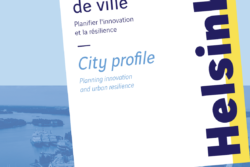
Helsinki : Planning innovation and urban resilience

Back from Cahors

Forget 5th Avenue

Rebalancing

Size, Network and People

Long live urban density!
The ideal culprit
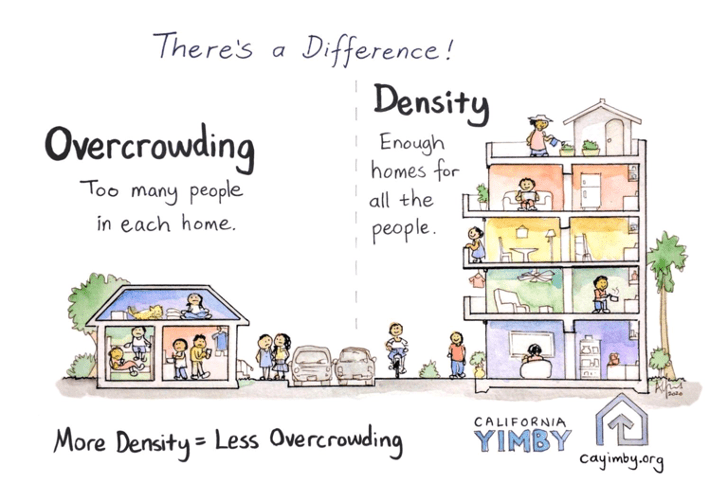
Behind the words: density
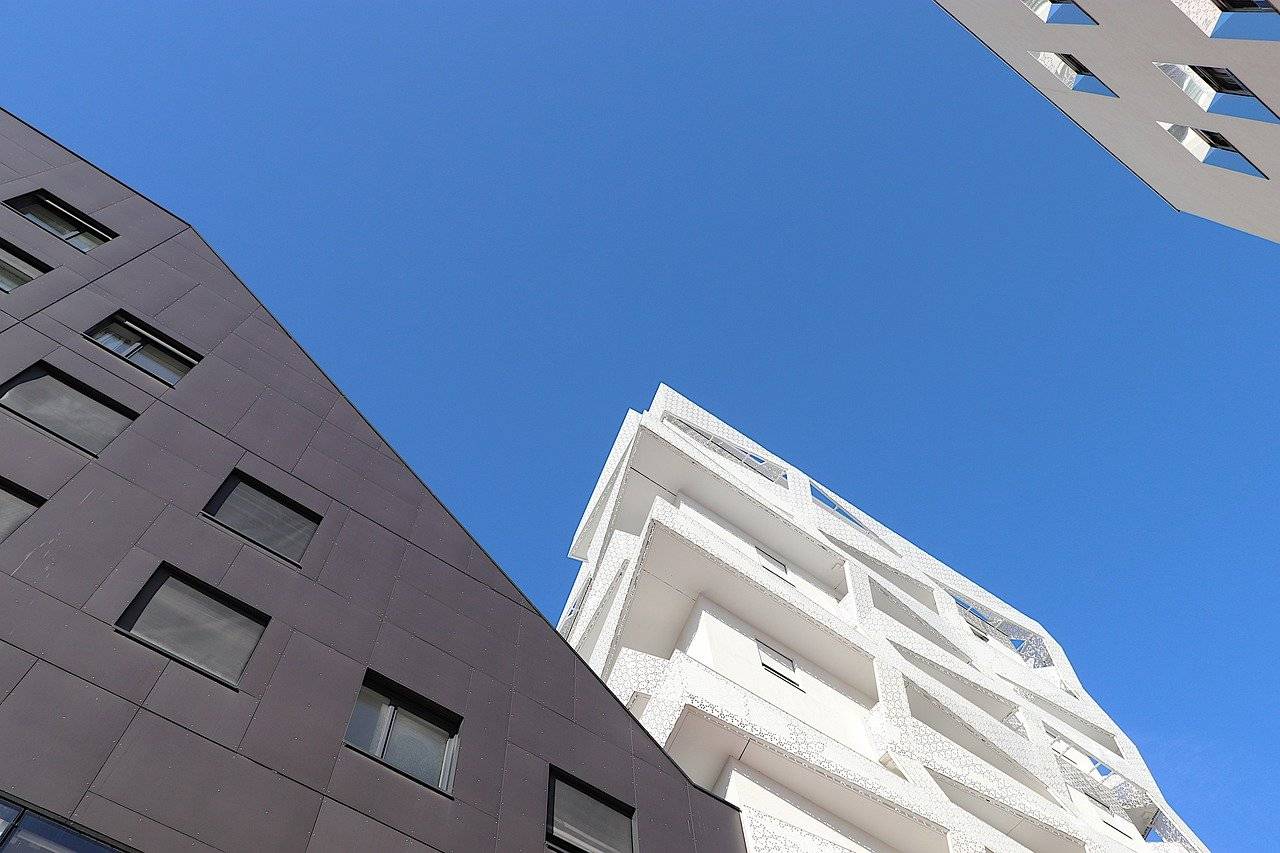
Behind the words: Affordable housing

Inventing the future of urban highways

Spatial justice, managing the situation to enable development?

German metropolises and the affordable housing crisis
La Fabrique de la Cité
La Fabrique de la Cité is a think tank dedicated to urban foresight, created by the VINCI group, its sponsor, in 2010. La Fabrique de la Cité acts as a forum where urban stakeholders, whether French or international, collaborate to bring forth new ways of building and rebuilding cities.















